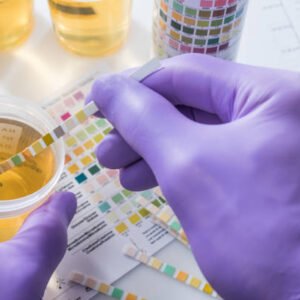PUS Routine
- Definition: PUS Routine is a laboratory test that analyzes pus samples to identify the presence of infection and determine the type of pathogens involved. It is commonly performed on samples obtained from abscesses, wounds, or other sites of infection to guide treatment decisions.
- Testing Methodology: The test involves collecting a sample of pus, usually through aspiration or drainage of an abscess. The sample is then sent to the laboratory, where it undergoes microscopic examination and culture to identify bacteria, fungi, or other microorganisms, as well as to assess the presence of inflammatory cells.
- Clinical Significance: The PUS Routine test is crucial for diagnosing infections and determining their causative agents. It helps in identifying bacterial strains and their susceptibility to antibiotics, allowing for targeted and effective treatment. This test is particularly important in cases of severe or recurrent infections.
- Risk Assessment: This test is particularly useful for patients with persistent wounds, abscesses, or signs of systemic infection such as fever, redness, or swelling. Timely analysis of pus can help healthcare providers initiate appropriate antibiotic therapy, reducing the risk of complications.
- Guidelines for Interpretation: Normal pus samples typically show few or no white blood cells and no growth of pathogens. Abnormal results may reveal high levels of white blood cells, bacteria, or fungi, indicating an active infection. The type of organism identified can inform treatment options and management strategies.
- Follow-Up and Management: If the PUS Routine indicates the presence of infection, healthcare providers may initiate or modify antibiotic therapy based on culture and sensitivity results. Ongoing monitoring may be necessary to assess treatment efficacy, and in some cases, further imaging or surgical intervention may be required to address the underlying infection.










Reviews
There are no reviews yet.